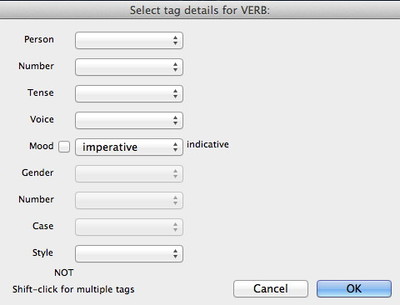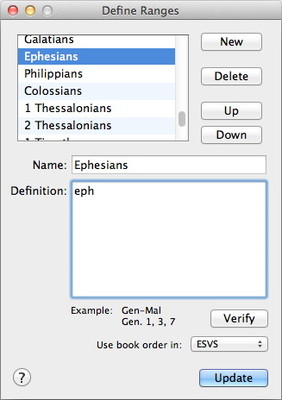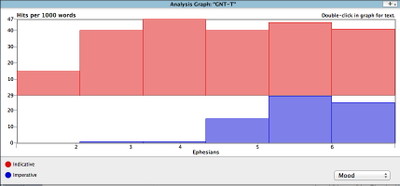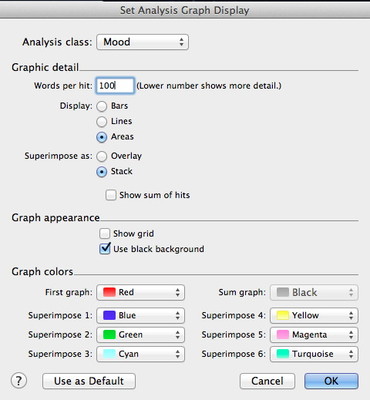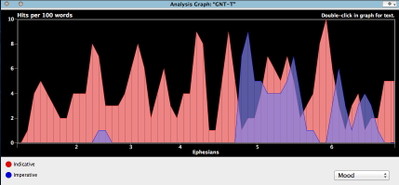Some other members of the team and myself are currently in Minneapolis demonstrating Accordance at the Desiring God Pastor’s Conference. Since the exhibit hall is basically deserted during the main teaching sessions, I slipped out last night and listened to the first speaker. Early in his message, he made an oft-repeated observation about the book of Ephesians: namely, that it is clearly divided into two parts. The speaker asserted that in the first three chapters, Paul uses verbs in the indicative mood—that is, verbs that make a statement or convey information. In the last three chapters, Paul switches to imperative verbs. Thus, he moves from theology to application, from instruction to exhortation.
It’s certainly an interesting point, but is it accurate? Is the book of Ephesians really so clearly divided between indicatives and imperatives? I’m glad you asked! Because it is just these kinds of patterns that Accordance is perfectly designed to reveal.
If you have a tagged Greek New Testament such as the GNT-T or the new NA27-T, click the Words button, then hit the tab key to select the contents of the search entry box. Now go to the Search menu and choose Verb… from the Enter Tag submenu. In the dialog box that opens, select indicative from the Mood pop-up menu, then hold down the shift key and choose imperative. (Holding the shift key enables you to select multiple items within the same category.) When you’re finished, click OK to dismiss the dialog and return to the Search tab. You’ll notice that Accordance will insert the proper search syntax for you.
Before we run this search, let’s limit it to the book of Ephesians by selecting Define Range… from the range pop-up menu at the top of the Search tab (the pop-up that usually reads [All text]). In the dialog box that appears, click the New button, then set both the Range Name and the Range Definition to “Ephesians.” When you click Update and close the dialog, your new Ephesians range will be selected in the Range pop-up. (Of course, if you’ve previously defined an Ephesians range, you only need to select it from the pop-up menu without having to go through the Define Ranges dialog.)
When you hit Return to perform this search, Accordance finds every indicative and imperative in the book of Ephesians. Now we just need to analyze the distribution of these two forms throughout the book. To do that, click the Graphs and Stats menu to the left of the Compare checkbox and choose Analysis Graph.
The Analysis Graph lets you choose the criteria you want to have graphed from the pop-up menu at the bottom right. Choose Mood from this pop-up to see a comparison of indicatives and imperatives.
The Analysis Graph graphs the frequency of occurrence in a particular sample size. The default sample size is hits per 1000 words, which is perfect for a large range like the entire New Testament, but too large for a small range like the book of Ephesians. To see more detail, we’ll need to customize the graph to use a smaller sample size. While we’re at it, we’ll also customize the look of the graph to make it a little slicker.
To customize the look of anything in Accordance, you can always use the keyboard shortcut command-T. With the Analysis Graph selected, use command-T to open the Set Analysis Display dialog. In that dialog, change the Words per hit to 100, select Areas rather than Bars, Overlay rather than Stack, and check the Use black background.
When you click OK, your Analysis Graph should now look like this:
From this we can see that it’s true that imperatives don’t really begin until the latter half of Ephesians. However, it’s not as if indicatives drop out completely. In fact, the highest concentration of indicatives comes right in the middle of the imperative section, and at that point the imperatives drop off dramatically. What point is that in the text? It’s the instructions to husbands and wives at the end of Ephesians 5. You would think this section would include lots of imperatives, but there are really only two, followed by a long discussion of the relationship between Christ and the church.
The graphs and statistical breakdowns Accordance provides are designed to enable you to see patterns like this in all their complexity, including the parts which run counter to the general trend.
What other interesting observations can you make from looking at this graph?


